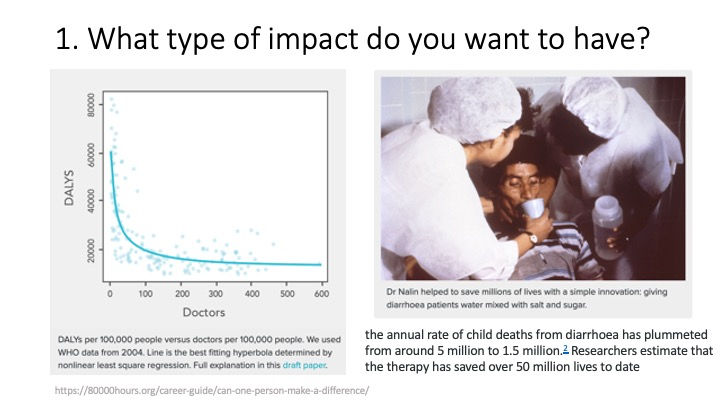A few thoughts about impact
- Wendy Chapman
- Aug 28, 2023
- 3 min read
Being in Pittsburgh where I started my academic career got me thinking about what I've accomplished--and not.
Coming to Melbourne was a pivot where I knowingly abandoned my 20-year NLP research path. It’s not that I refuse to do NLP research, but I wanted to do something with potentially higher impact. I’m not going to save lives like a clinician can. One estimate is that a physician saves 100 life years in their career. That pales when compared to Dr. Nalin who pioneered use of an oral fluid for dehydration and is estimated to have saved over 50 million lives to date. It’s hard to measure the impact of an NLP algorithm or teaching a university subject or mentoring a PhD student. It is desire for impact that drives me towards more translational research.

Brian and I gave talks to PhD students at the University of Pittsburgh last week, which gave me the chance to share career advice--basically, a letter to myself about what I wish I would have done differently. Here is what I advised the students:
Decide where you want to fall on the translational spectrum

My NLP research was further to the left of the translational spectrum, and after a decade, I realized I wanted to be in the T3 stage: translation to practice. Writing papers and grants on NLP algorithms became less satisfying for me, and that drove a change in career direction. You might argue that NLP and other AI tools will contribute to practice translation, and I agree, but my research practices didn’t lead to the translation I wanted. Which brings me to the next point...
Follow your own advice
In informatics and digital health, we teach best practices for development of digital innovations that will be implemented in healthcare. But in my NLP research, I did not embed all of those practices in our research lab, and that limited the translation of our research to practice.
Push vs pull - If you build it, they may not come. Don’t build something without confirming that your end users actually want it.
On the one hand, as a postdoc, I helped create an algorithm for determining whether a concept mentioned in a clinical note was negated (NegEx). This was a “pull” project, because my advisors Bruce Buchanan and Greg Cooper developed a system for creating research cohorts and it needed a way to differentiate “chest pain” from “no chest pain”. This algorithm and its extension ConText have been translated into many different languages, embedded into other NLP systems such as medSpaCy and cTakes, and used by researchers, healthcare organizations, and industry. On the other hand, I spent much of my time in San Diego and Utah developing the knowledge representation to create phenotype definitions that could comprise a knowledge base for whatever NLP algorithm you used. It was a smart way to scale NLP phenotyping, but after 6 years, I realized our relatively small-scale projects didn’t really need an efficient way to scale. My research associate who built the infrastructure took it with her to industry where they expanded it and are using it. But for us as researchers and for our clinical partners, the juice wasn’t worth the squeeze.
Software development - best practices for software development will improve the chances your innovations will be be used and achieve impact.
Whether it is supporting other researchers in using your code or facilitating implementation of a digital solution, you need version control, helpful documentation, easy-to-use user interfaces, etc. Research funding requires constant innovation and doesn’t fund maintenance and dissemination. However, dedicating more time to proper software development and data management practices would have decreased research fiascos, would have helped build community around our algorithms like ConText, and could have increased use of our tools in research and healthcare settings.
What advice do you wish you would have followed 10 years ago?
Pittsburgh Art Gallery 2023
One of the Troy Hill Art Houses is called Darkhouse Lighthouse, where the artists have built a full-size, working lighthouse entirely within a dilapidated row house. Incredible. Bottom row shows a piece from an Aaronel deRoy Gruber exhibit, a new puppet in Isla Hansen's studio, and a blurry but happy photo from PNC Park, home of the Pittsburgh Pirates.















Comments